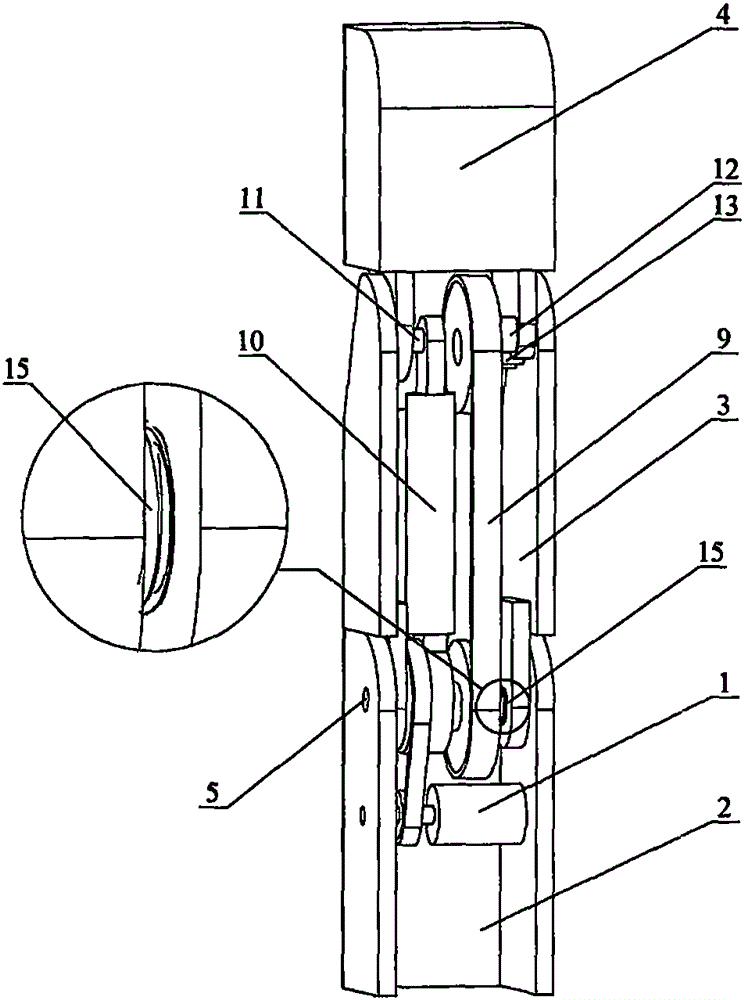Pinching-holding composite and adaptive robot finger device with rod and wheels connected in parallel
A robot finger, parallel technology, applied in the directions of manipulators, chucks, manufacturing tools, etc., can solve the problems of high manufacturing cost, small grasping range, lack of flexibility, etc., and achieves small motion dead zone, large grasping range, anthropomorphic effect
- Summary
- Abstract
- Description
- Claims
- Application Information
AI Technical Summary
Problems solved by technology
Method used
Image
Examples
Embodiment Construction
[0036] The specific structure and working principle of the present invention will be further described in detail below in conjunction with the accompanying drawings and embodiments.
[0037] An embodiment of the rod-wheel parallel pinching compound self-adaptive robot finger device designed by the present invention, as figure 1 , figure 2 , image 3 , Figure 4 , Figure 5 , Image 6 , Figure 7 , Figure 8 with Figure 9As shown, it includes driver 1, base 2, first finger segment 3, second finger segment 4, first transmission wheel 7, second transmission wheel 8, transmission member 9, connecting rod 10, first shaft 5, second Shaft 6, third shaft 11, fourth shaft 12, fifth shaft 13, shift block 14 and spring member 15; the driver 1 is fixedly connected to the base 2, and the output shaft of the driver 1 is connected to the connecting rod 10; The first shaft 5 is sleeved in the base 2; the second shaft 6 is sleeved in the base 2; the first finger segment 3 is movably ...
PUM
 Login to View More
Login to View More Abstract
Description
Claims
Application Information
 Login to View More
Login to View More - R&D
- Intellectual Property
- Life Sciences
- Materials
- Tech Scout
- Unparalleled Data Quality
- Higher Quality Content
- 60% Fewer Hallucinations
Browse by: Latest US Patents, China's latest patents, Technical Efficacy Thesaurus, Application Domain, Technology Topic, Popular Technical Reports.
© 2025 PatSnap. All rights reserved.Legal|Privacy policy|Modern Slavery Act Transparency Statement|Sitemap|About US| Contact US: help@patsnap.com



